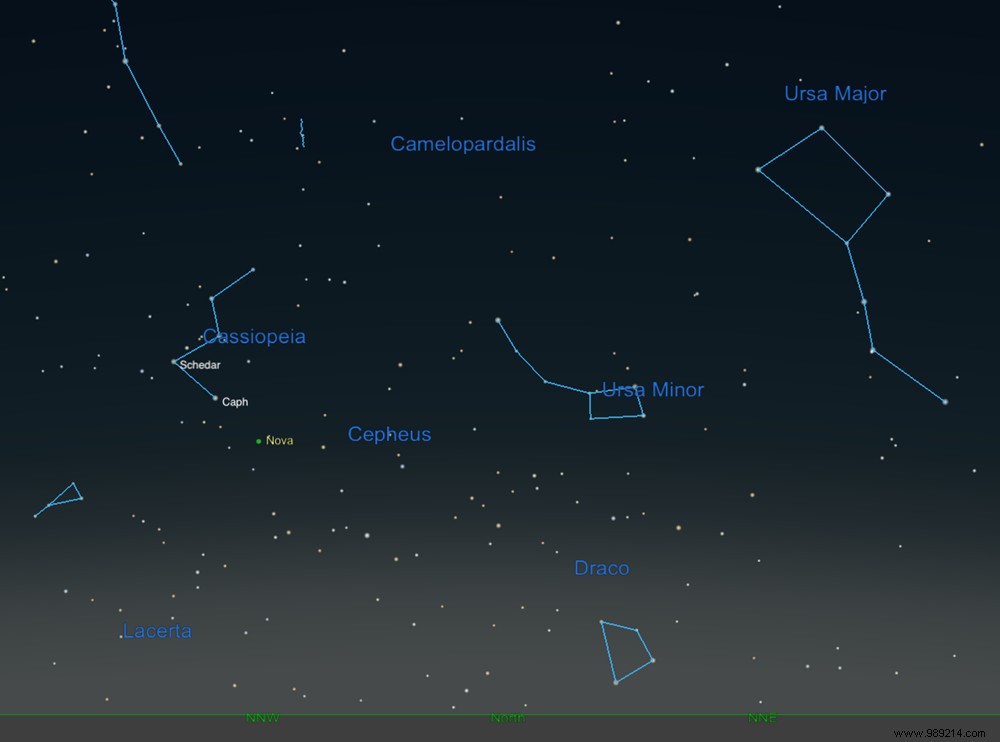An amateur astronomer has just spotted a "new object" in the sky. In reality, it is a star that has recently been transformed into a nova. And it's still bright enough for you to see tonight.
A nova is a star that suddenly becomes very bright. This bright light only lasts a few days to a few weeks. The object then gradually regains its initial glow.
The phenomenon occurs in a binary system consisting of a white dwarf and a star on its way to becoming a red giant. The latter then loses mass in favor of the former. As a result, an accretion disk forms around the white dwarf before falling on the star.
These gases which touch the surface are then compressed and heated to temperatures of the order of ten million kelvins, until the pressures and temperatures become sufficiently high. large enough to trigger a thermonuclear explosion. And boom:you have a nova!

On the evening of March 18, Japanese amateur astronomer Yuji Nakamura spotted one such event, revealed by a "new point of light" in the familiar constellation of Cassiopeia.
Astronomers from Kyoto University then took over using the 3.8-meter Seimei Telescope atop Mount Chikurinji, Japan. They were able to obtain a spectrum of the new object cataloged as PNV J23244760+6,111,140 , confirming that it was indeed a classic nova.
At the time of its discovery, the star displayed magnitude 9.6. Then, in a few hours, it would have reached a magnitude of 9.1, before presenting a magnitude 7.8 the next day (March 19). Remember that the higher the magnitude, the lower the luminosity. At this magnitude, the object would be bright enough to be spotted with a simple pair of binoculars.
For those interested (Northern Hemisphere only), start by identifying the familiar "W" in the constellation Cassiopeia. This structure is visible high in the northwest sky once the sun sets. Then rely on the stars Schedar and Caph as landmarks. The nova, lies about 5.9° northwest of Caph, as shown in the image below:

Hard to say how long this event will be visible or how bright it will be over the next few days. The best, to put the odds on your side, is to attempt this observation as soon as possible. It's time to get out the binoculars, or your telescope!